Are your Facebook ads underdelivering? Wondering how to improve your results?
In this article, you'll learn how to write better ad copy, including where to find ideas and what to avoid, plus a lot more.
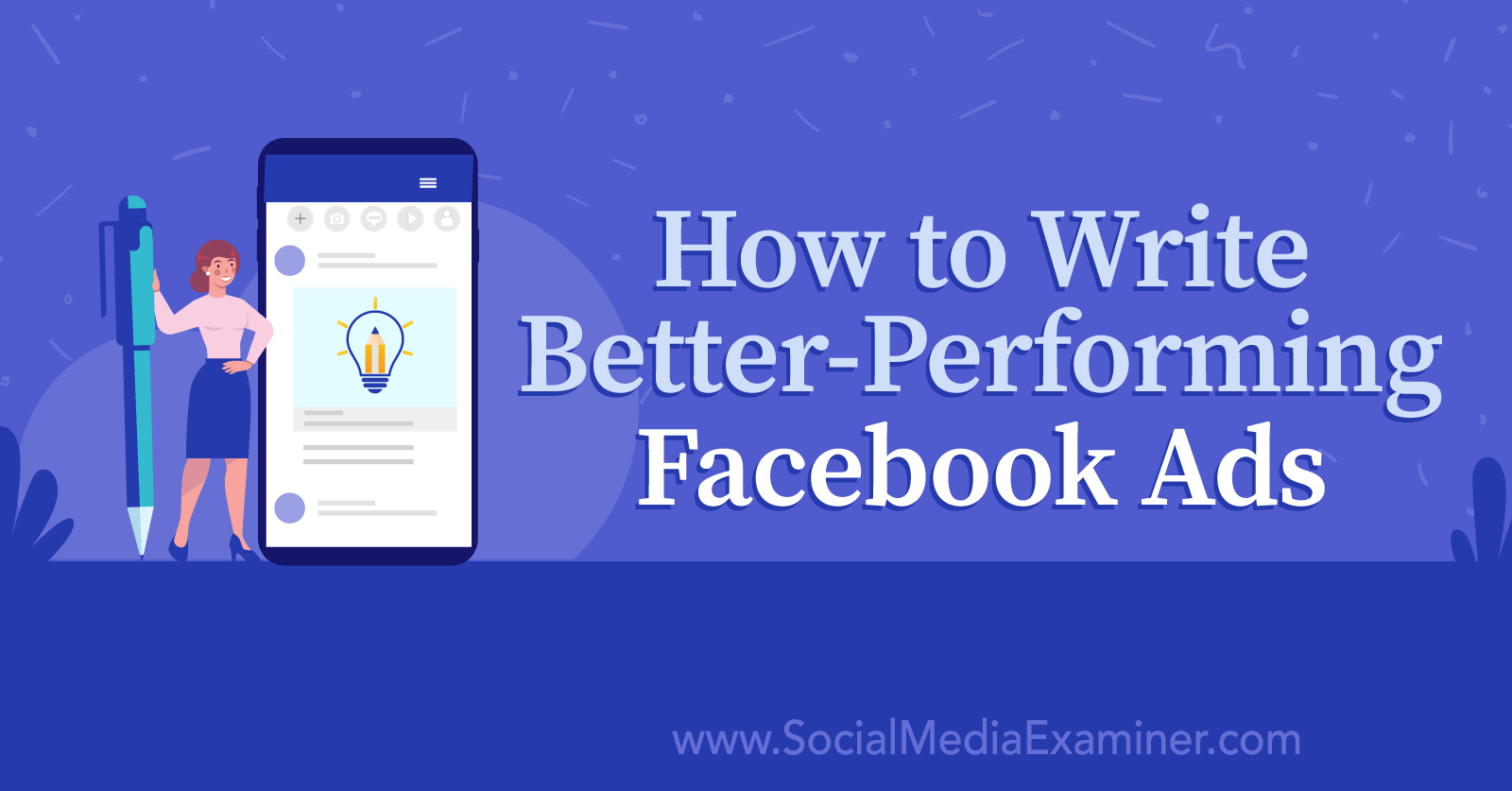
Why Facebook Still Matters for Advertisers
We have to start with the elephant in the room. Recent shifts in privacy have had a huge impact on Facebook, which has caused growing concern about ad costs increasing. So is Facebook still a viable option for paid advertising?
In a word: yes.
One of the first things to remember about Facebook advertising right now is that the privacy laws mostly affect how Facebook tracks users when they're off of the app. After someone clicks on a link to your ad, Facebook no longer sees whether that person followed through on your landing page to convert. Without that information, Facebook has a somewhat harder time targeting other people based on that behavior.
This doesn't take away from the fact that Facebook targeted the right person who clicked on the link and went to that landing page, though. Nor does it take away from the fact when that person converts; the only thing that's really affected is Facebook's ability to see the conversion.
You can use other tools to see those conversions and measure Facebook ad performance. With that information, you're able to adjust the targeting on your own without relying on Facebook's automated targeting algorithms to do it for you. So there are still plenty of ways to help keep ad costs down.
As you read about the panic about Facebook stock plummeting recently, keep the big picture in mind. Yes, Facebook still reports billions of active users daily and is still the biggest and most used social media platform in the world. As such, there's a good chance that your ideal customer is on Facebook for at least a part of their day.
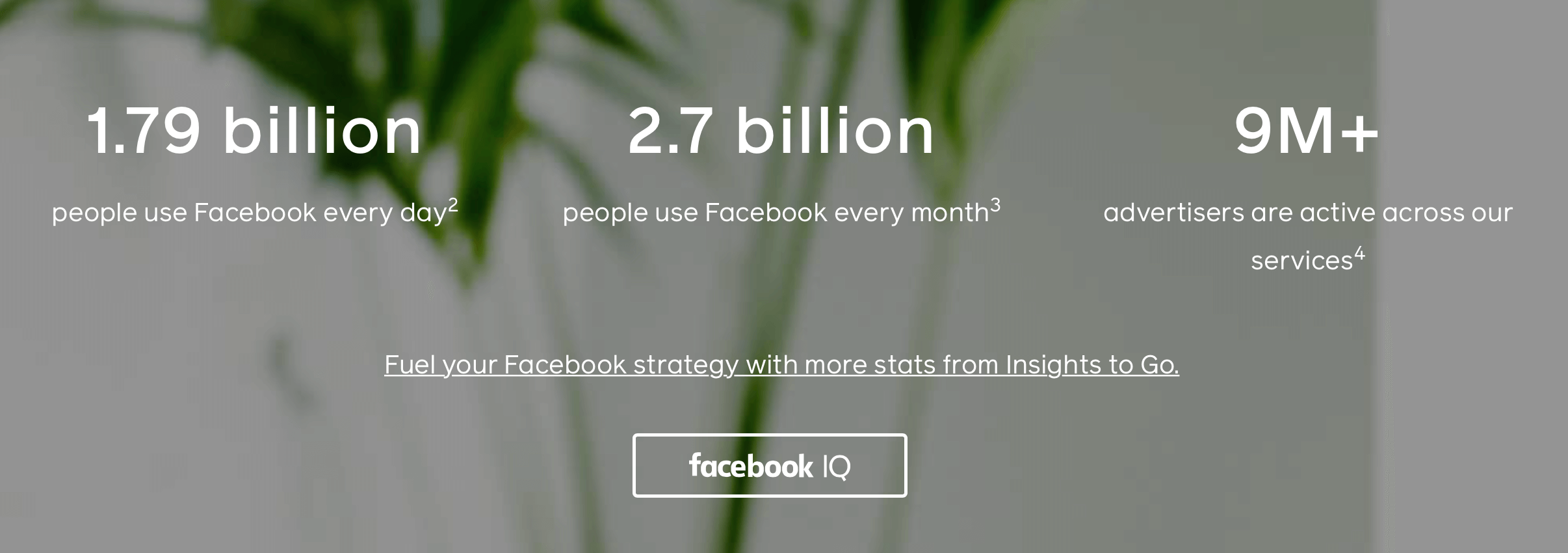
#1: Choose Imagery That Will Stop the Scroll
An interesting statistic released in a report a couple of years ago suggested that people scrolling on Facebook will scroll the length of the Statue of Liberty in a single day. That means that while they're on Facebook, they scroll the equivalent of 305 feet. That's a lot of information being consumed in their time on Facebook.
And people on mobile tend to scroll faster than they do on desktop. So the image or video accompanying a Facebook ad is important but the role of the imagery is to stop the scroll.
Most users will see an image during their scroll and pause. If the image piques their interest, they'll read the copy. Both copy and imagery are important in your Facebook ad campaigns but they serve different roles.
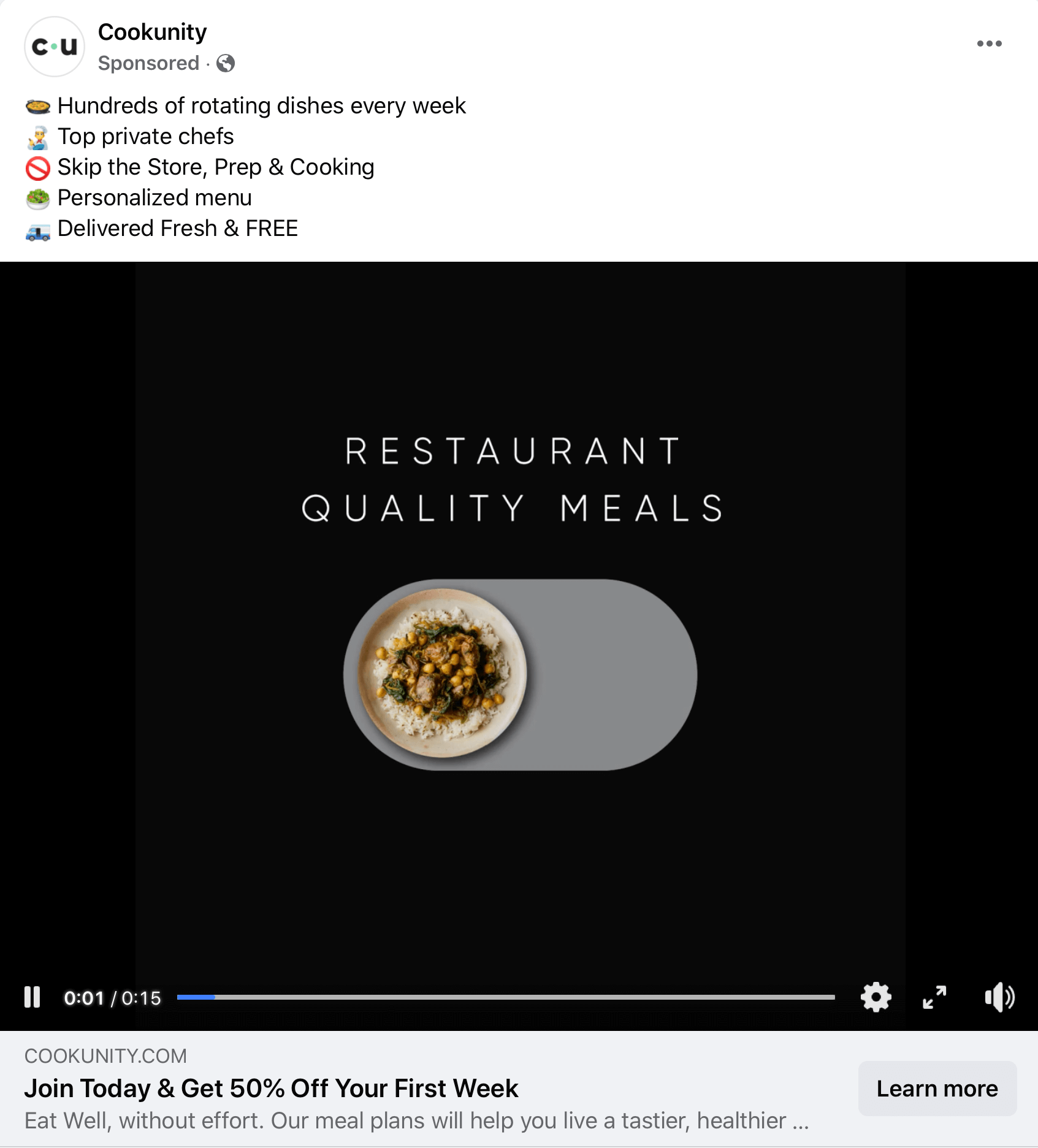
Right now, Facebook is favoring raw, real images or photographs over curated or edited images. Stock images can sometimes work well. If you're a personal brand, obviously use imagery of you. If you have a facility, show images of the facility. If you teach classes, show images of you doing that.
In terms of adding other elements to the image, be careful about things that look like buttons that people can click. Arrows, buttons, and calls to action on the image itself are getting suppressed in the feeds; therefore, the cost per thousand impressions is going up even when people aren't clicking on the link.
Of course, test everything. Test different stock photos related to your product or service, personal images related to your brand, and photographs of the facility or store location. Choosing these candid or location raw photographs without heavy editing or a lot of text often helps stop the scroll, which is the objective of the imagery.
Does Your Marketing Strategy Need an Upgrade?

It's 2022 and all of your hard-won strategies have gone out the window. You need a new plan and that's where Social Media Marketing World comes in.
Over the three-day event, you'll discover how to leverage the newest social marketing techniques so you can become a superstar for your company or clients. No pitching. No gimmicks. Just world-class training from experts you respect.
UPGRADE YOUR STRATEGY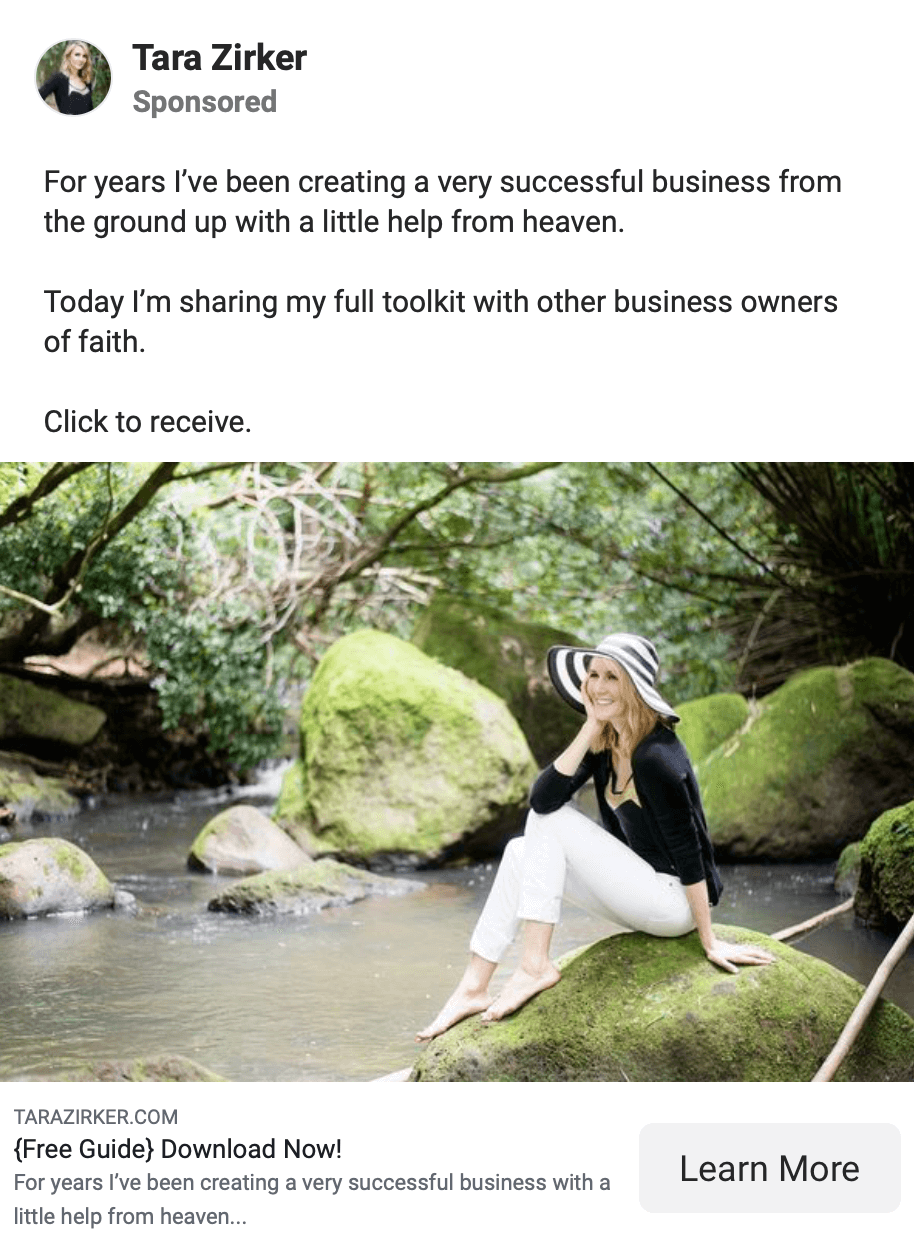
In videos, use a hook with text within the first second of the video to stop the scroll. Even if users never turn their sound on to listen to the video, if that video can stop the scroll, then it did its job. The user can read the copy that goes along with it, and if they do turn the sound on and watch the video, that's even better.
#2: Write Facebook Ad Copy That Pre-Sells Your Offer
The text that accompanies your Facebook ads campaign, or the copy, will sell or pre-sell your offer to the audience. Once the image has stopped the user's scroll, they're going to read the copy to find out why they stopped scrolling. That's your opportunity to sell them on your offer.
This differs a bit from previous strategies in which the goal of the copy was to pique interest and get people to click through. Some were clickbait-type copy that left an open-ended question. Given the changes in privacy and targeting, it's now much more effective to write ads that actually pre-sell the offer for you.
If done well, by the time the user clicks on the link to view your landing page, they already want to sign up or buy the service or product.
All they're looking for by the time they get to the landing page is a reason to change their mind. They're looking for the red flags, the price not reflecting the value, mixed messaging, or some other sign that the offer being presented isn't for them.
Pull Ad Copy From Your Landing Page
There are a few different philosophies when it comes to writing Facebook ad copy. And one of the more popular philosophies has been to create completely unique ad copy, giving some information to social media users, and then filling in the gaps on the landing page where the rest of the information sits.
However, it may be more effective to pull your ad copy directly from the landing page itself. Not only does this help give the user a seamless transition from the ad over to the landing page but it also echoes the relevance of the offer they're reviewing.
If the copy between the ad and the landing page differs too much, that audience member could get confused or lost in the mixed messaging and close the page without following through to sign up or buy.
To help you put together your ad copy, pull the information directly off the landing page into a separate document. Pull out headlines, subheadings, and any bulleted lists or benefits that you listed, and use those to structure your ad copy.
As always, there's no blanket solution that will work for every business. So as you're pulling your ad copy directly from your sales page, you'll also want to test the headlines, the benefits, generally the order in which you build everything. You may want to start with a headline and then include a clarifying question before adding the call to action. But this document will give you a solid place to start.
3 Days of World-Class Training—Zero Travel
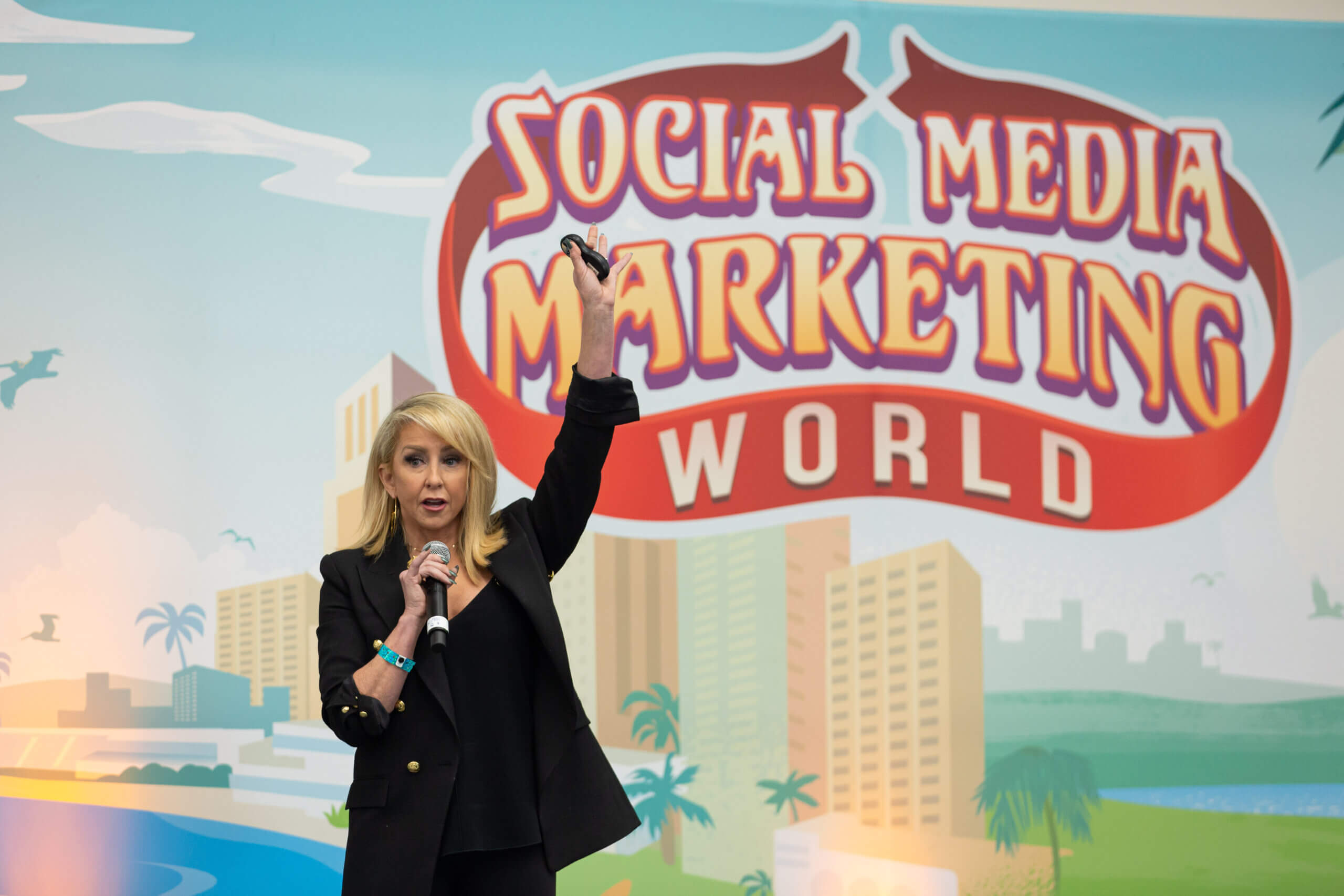
Want to take your marketing to the next level, but can't justify flying across the country (or the world) for training?
With the On-Demand ticket to Social Media Marketing World, you'll grow your career with world-class training from experts you respect—at your coffee table or in your office. Enjoy hours of actionable content that you can watch anytime, anywhere. It's a no-brainer…and you can even do it in your jammies, if that's your thing.
GET STARTED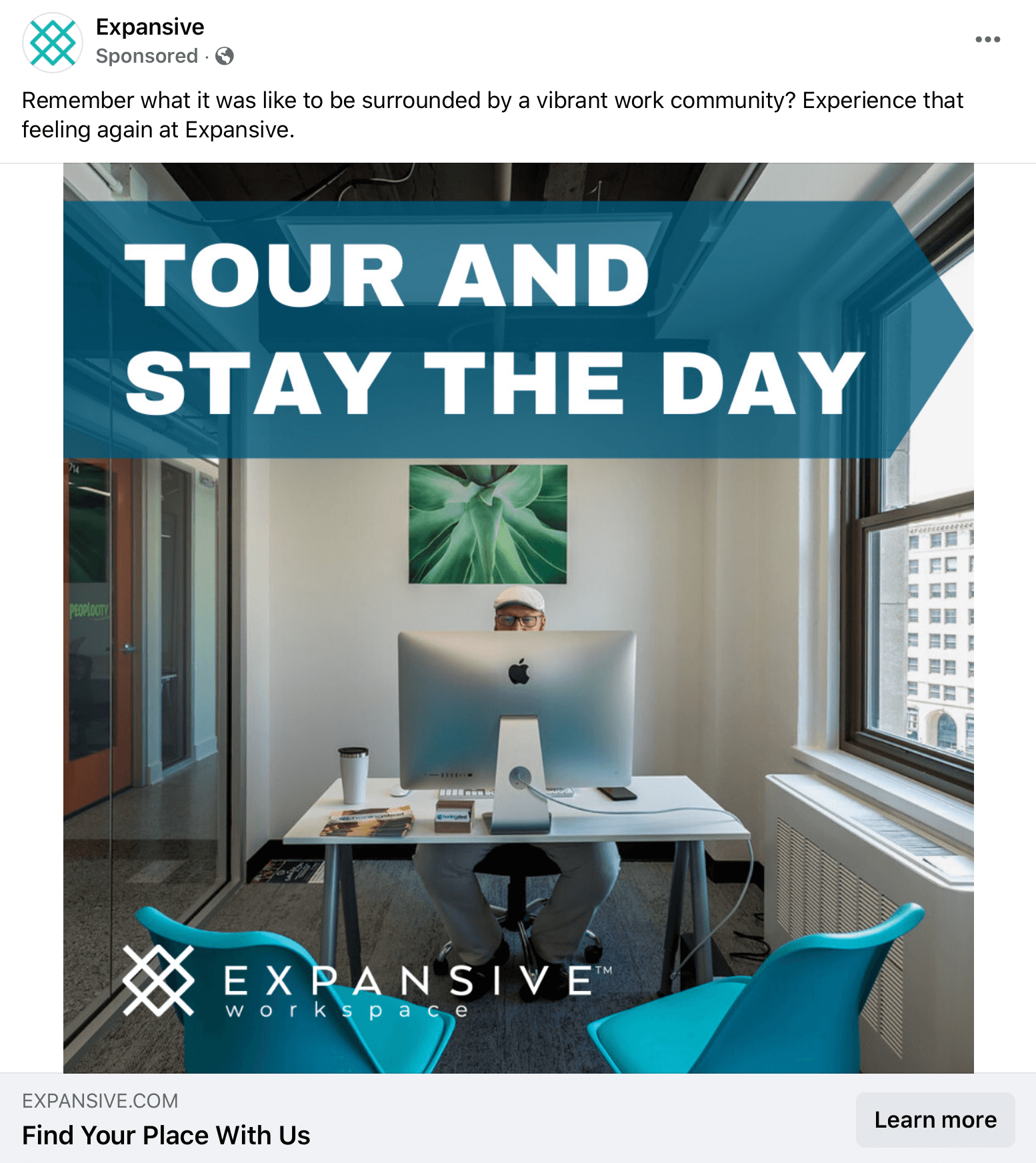
Write Headlines That Include a Strong Benefit or Simply the Offer
Typically, the headline includes a benefit or future promise of the product or service being offered. Of course, if your sales page isn't converting in the first place or is jumbled with ineffective headlines, then that's a whole other issue you probably want to work on before pulling any copy over to your ads.
You can also dynamically personalize your headline through geotargeting. If you're location-based, you might use a headline like, "Hey, Milwaukee. Get your first week at [yoga studio name] for just $11. Feel fitter and more relaxed."
While putting your headlines together into your ad copy, experiment with including different emojis to emphasize certain points, break up the words a bit, and just add some conversational punch to the copy. Some emojis play well to every audience and demographic. No matter how young or old, or casual or professional your tone, there are emojis that can express that vibe.
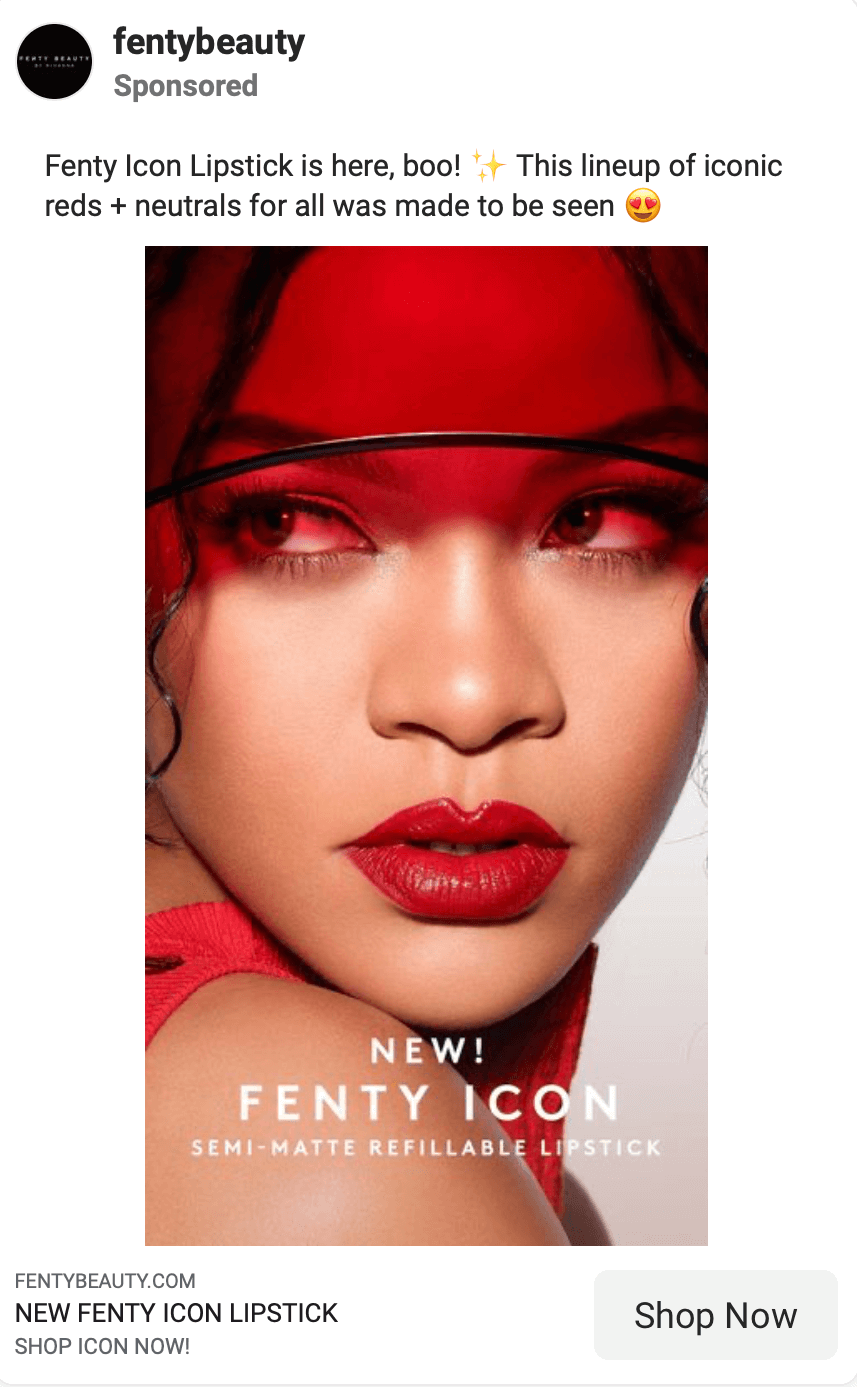
By adding as many visual elements into your ad copy as possible, you can help people put themselves into the experience right away. So even a single emoji can have an impact on the performance of your ads.
Choose Testimonials That Address Objectives
Once you've pulled the headlines, subheadings, and any other important text off of your landing page, then you can start gathering testimonials from previous customers to add to your copy as needed.
When choosing which testimonials to use in your ad copy, try to choose specific ones that address those pain points or objections your audience has. For example, if you run a local yoga studio, you might have testimonials that say more than just how much they love the studio. They may mention that the pricing was within their budget or that they're in the best shape of their life despite their doubts or initial thoughts that they'd dislike yoga.
Nearly every company and brand has a collection of testimonials that read something along the lines of, "I love this [brand/product/service]," and while those are nice to collect, they do very little to add to the power of your ad copy and sell that product or service.
You want to choose testimonials that directly counter any potential objections or other pain points your audience might have. Again, the objective of your ad copy is to pre-sell your product or service before the customer even clicks on the link to go to your landing page.
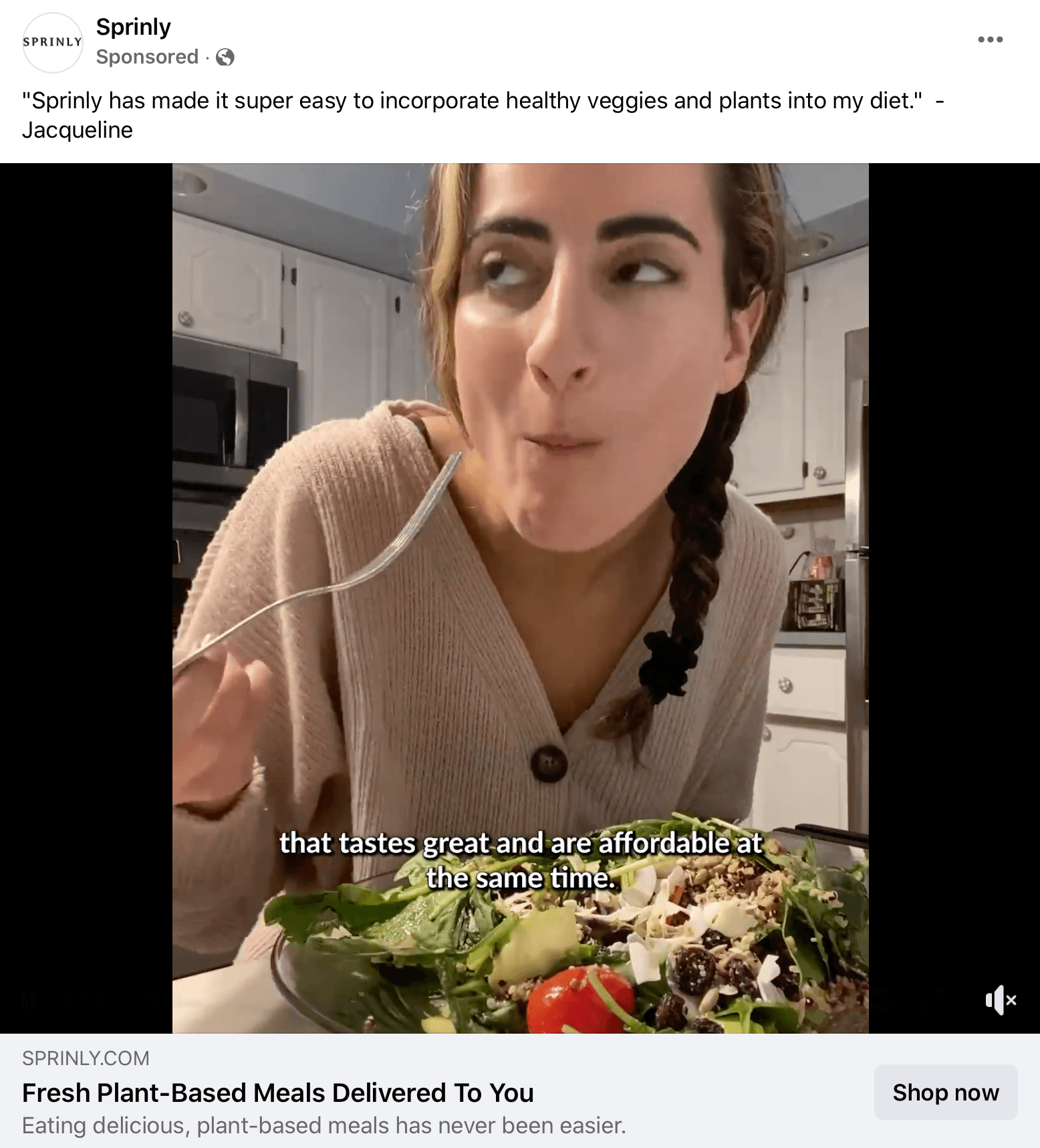
Avoid Sensitive Words in Your Facebook Ad Copy
Facebook's algorithms pick up on certain target words and have proven sensitive to certain words from time to time. This results in rejecting an ad or sometimes banning an ad account, even when the marketer or brand running the account has done nothing directly against Facebook's guidelines. Therefore, even when pulling copy directly from the page, you may need to tweak or alter some of the headlines to satisfy Facebook's unwritten sensitivity notes.
For example, too many instances of the words you or your can turn an ad from targeted and relevant to stalking and a little creepy. Even in paid advertising, Facebook's overall mission is for people to feel good or better about themselves when they leave Facebook. They don't want any content, paid or organic, to make the user feel worse.
However, a successful marketing technique for copywriters has included mentioning a pain point and then aggravating that pain point to highlight the user's struggles so the solution being presented comes with a sigh of relief. However, as many retailers are finding out, aggravating those pain points or pointing them out deliberately through the use of words such as lonely, anxious, or struggling can actually get an ad rejected.
There are plenty of ways to address pain points without emphasizing the aggravation. For example, you may want to use a headline like, "It's time to start feeling fit and fabulous" rather than "Are you tired of feeling bloated and undesirable?"
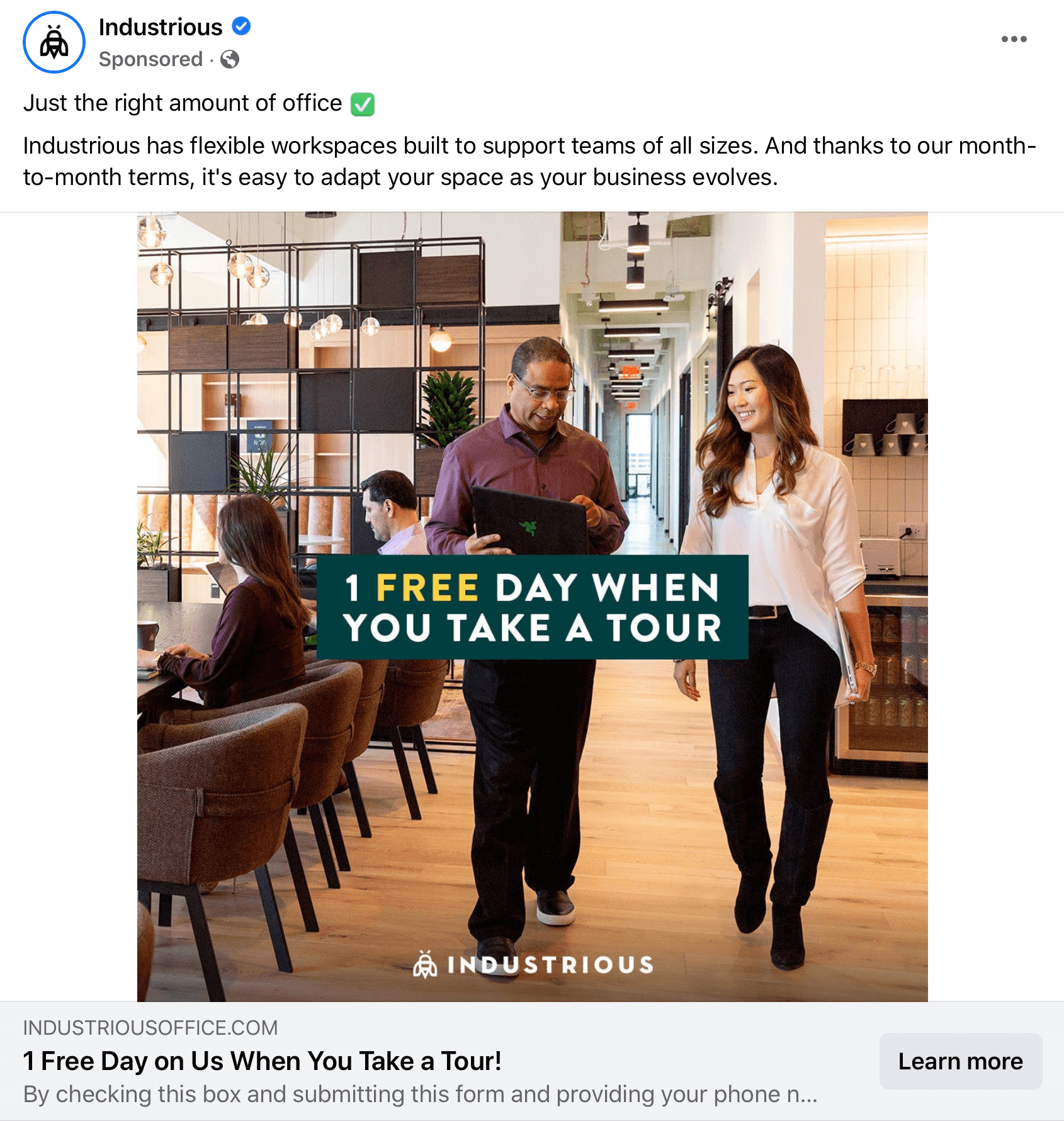
Some research suggests that using too many instances of you and your prompts users to then say Facebook is listening in on me—which is scary for everyone. By adjusting your copy with just these couple of small changes, you can let your audience know that you hear them without making them feel like you're listening in on their conversations.
Test Different Lengths of Copy
As with so many things in advertising, you want to test the character length of your written ad copy to see what performs best for your audience.
You can start by grabbing one headline, one benefit statement or subheading, and a call to action to form your short copy ad. To lengthen the ad into a medium copy ad, you can add a second benefit statement or a testimonial. And for your longest ads, you could add more testimonials and benefit statements.
Tara Zirker is a Facebook ads expert and the founder of the Successful Ads Club, a membership site designed to help marketers improve their Facebook and Instagram ads results. Find Tara at @tarazirker on Instagram and TikTok.
- Get Tara's free download at YourAdKit.com.
- Learn more about Social Media Marketing World 2022 at SocialMediaMarketingWorld.info.
- Connect with Michael Stelzner at @Stelzner on Instagram.
- Watch exclusive content and original videos from Social Media Examiner on YouTube.
- Tune into our weekly Social Media Marketing Talk Show. Watch live on Fridays at noon Pacific on YouTube. Listen to the replay on Apple Podcasts or Google Podcasts.
Listen to the Podcast Now
This article is sourced from the Social Media Marketing Podcast, a top marketing podcast. Listen or subscribe below.
Where to subscribe: Apple Podcast | Google Podcasts | Spotify | RSS
✋🏽 If you enjoyed this episode of the Social Media Marketing podcast, please head over to Apple Podcasts, leave a rating, write a review, and subscribe.
Experience The World's Largest Social Media Conference
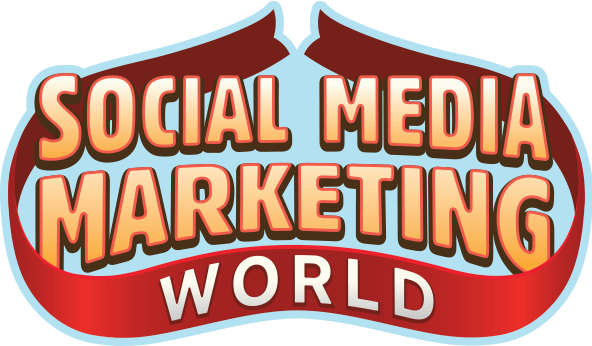
Quality marketing training, actionable takeaways, and beneficial connections—that's just a fraction of what you can expect at Social Media Marketing World! Join thousands of smart marketers in sunny San Diego this spring and level up your marketing.
🔥 Sale ends Wednesday! 🔥
GET TICKETS NOW


0 Comments